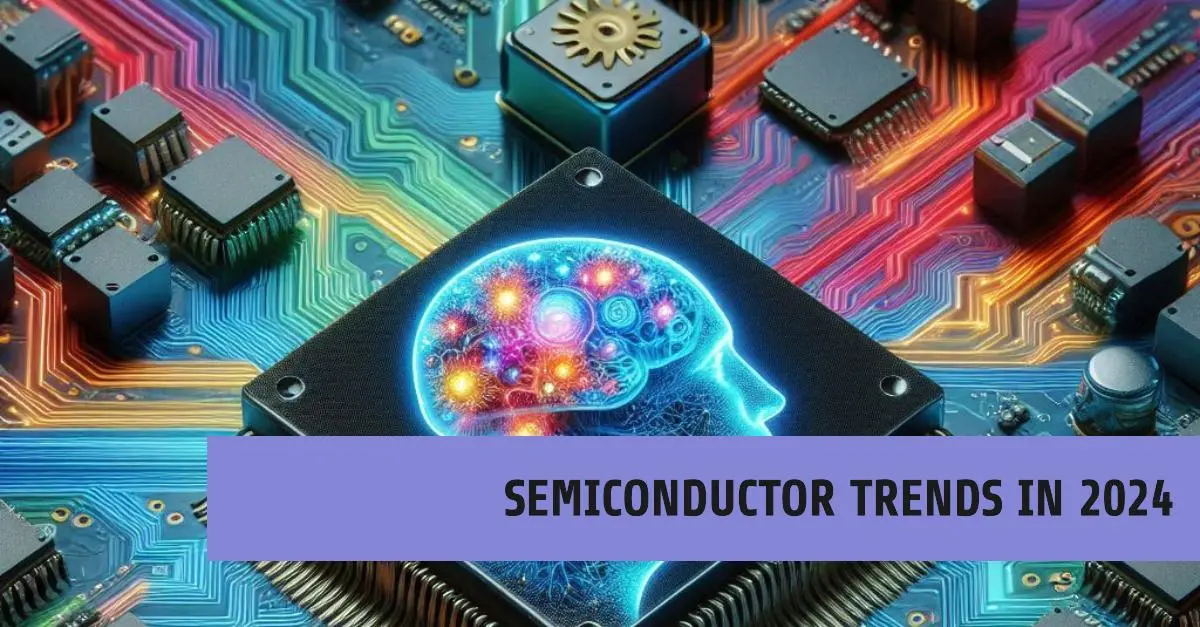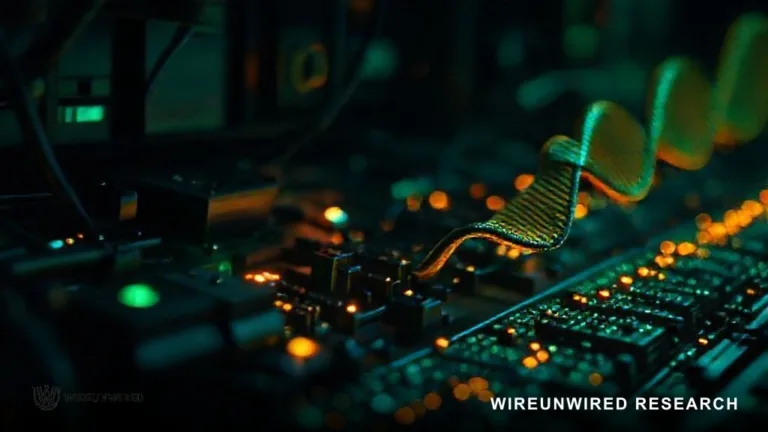Staying abreast of the latest semiconductor trends is crucial for anyone involved in the tech industry. As we move into 2024, several key advancements are set to shape the future of this vital sector. At WireUnwired, we’re committed to bringing you the most relevant and up-to-date information on these trends. In this post, we’ll explore the top five semiconductor trends that are poised to make a significant impact in 2024.
Also Read : Nvidia to acquire Intel ?
1)Advanced Lithography Techniques (EUV Lithography)
We have already come a long way when it comes to node size. Just a few years ago, we were using 14 nm nodes, and now we are rapidly advancing towards 3 nm nodes. And without the EUV (Extreme UltraViolet Lithography) technique, this would not have been possible.
Extreme ultraviolet (EUV) lithography has actually revolutionised the semiconductor industry by enabling the production of smaller, more efficient chips. This advanced technique uses ultraviolet light with extremely short wavelengths as compared to DUV(Deep Ultraviolet) Technique to create incredibly fine patterns on silicon wafers. The result is the ability to manufacture semiconductors with process nodes as small as 5 nm and even smaller .
Impact on Chip Design and Performance
EUV lithography allows for higher transistor density, which translates to improved performance, higher raw power and lower power consumption. This is critical for developing next-generation processors that are faster, more powerful, and more energy-efficient.
Key Players and Advancements
Leading companies like ASML, TSMC, and Intel are at the forefront of EUV lithography technology. ASML, in particular, is a key supplier of EUV lithography machines, providing the necessary equipment for other semiconductor giants to push the boundaries of chip design (Intel Newsroom, 2023).
2)3D Chip Stacking
3D chip stacking is another transformative trend in the semiconductor industry. This technology involves stacking multiple layers of chips vertically, rather than spreading them out horizontally. The result is a more compact, efficient, and powerful semiconductor device.
Benefits and Applications
3D chip stacking offers numerous benefits, including reduced latency, enhanced performance, and lower power consumption. This technology is particularly beneficial for applications that require high-performance computing, such as data centers, artificial intelligence, and gaming .
Key Companies Implementing This Technology
Companies like Intel, TSMC, and Samsung are leading the way in 3D chip stacking. Intel’s Foveros technology, for example, allows for the integration of different types of logic and memory on a single chip, enhancing performance and efficiency (Intel, 2023).
3)AI and Machine Learning Integration
The integration of artificial intelligence (AI) and machine learning (ML) capabilities within semiconductor devices is a rapidly growing trend. These technologies enable semiconductors to process and analyze large amounts of data more efficiently, leading to smarter and more capable devices.
Impact on Various Sectors
AI and ML integration in semiconductors have far-reaching implications for various industries, including healthcare, automotive, and consumer electronics. For instance, AI-enabled chips can improve medical diagnostics, enhance autonomous driving capabilities, and provide more intuitive user experiences in consumer devices (NVIDIA, 2023).
Leading Companies and Innovations
Key players like NVIDIA, AMD, and Qualcomm are at the forefront of this trend. NVIDIA’s GPUs, for example, are widely used in AI and ML applications, providing the necessary processing power for complex algorithms .
Also Read : 3 Reasons Why Semiconductors are Driving Big Geopolitics?
4)Quantum Computing Progress
Quantum computing represents a significant leap forward in computational power and problem-solving capabilities. Advancements in quantum computing hardware are bringing us closer to realizing the full potential of this technology.
Potential Industry Impacts
Quantum computing could revolutionize fields such as cryptography, materials science, and complex system simulations. It has the potential to solve problems that are currently intractable for classical computers, opening up new possibilities for innovation and discovery (IBM, 2023).
Companies Leading the Charge
Companies like IBM, Google, and Intel are making significant strides in quantum computing. IBM’s Quantum Experience and Google’s Sycamore processor are notable examples of the progress being made in this field .
5)Expansion of IoT Devices
The Internet of Things (IoT) continues to expand, driving the demand for specialized semiconductors that can support the connectivity and efficiency required by these devices. As more devices become interconnected, the need for advanced semiconductors grows.
Growth of IoT and Its Demands
IoT devices require semiconductors that are not only powerful but also energy-efficient and capable of handling complex communication protocols. This is essential for applications ranging from smart homes and cities to industrial automation and healthcare .
Key Players and Innovations
Companies like Qualcomm, Broadcom, and Texas Instruments are leading the development of IoT semiconductors. These companies are creating chips that enable seamless connectivity and enhanced performance for a wide range of IoT applications .
Discover more from WireUnwired Research
Subscribe to get the latest posts sent to your email.




